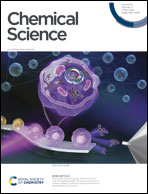Nanopore-based glycan sequencing: state of the art and future prospects
Abstract
Sequencing of biomacromolecules is a crucial cornerstone in life sciences. Glycans, one of the fundamental biomolecules, derive their physiological and pathological functions from their structures. Glycan sequencing faces challenges due to its structural complexity and current detection technology limitations. As a highly sensitive sensor, nanopores can directly convert nucleic acid sequence information into electrical signals, spearheading the revolution of third-generation nucleic acid sequencing technologies. However, their potential for deciphering complex glycans remains untapped. Initial attempts demonstrated the significant sensitivity of nanopores in glycan sensing, which provided the theoretical basis and insights for the realization of nanopore-based glycan sequencing. Here, we present three potential technical routes to employ nanopore technology in glycan sequencing for the first time. The three novel technical routes include: strand sequencing, capturing glycan chains as they translocate through nanopores; sequential hydrolysis sequencing, capturing released monosaccharides one by one; splicing sequencing, mapping signals from hydrolyzed glycan fragments to an oligosaccharide database/library. Designing suitable nanopores, enzymes, and motors, and extracting characteristic signals pose major challenges, potentially aided by artificial intelligence. It would be highly desirable to design an all-in-one high-throughput glycan sequencer instrument by integrating a sample processing unit, nanopore array, and signal acquisition system into a microfluidic device. The nanopore sequencer invention calls for intensive multidisciplinary cooperation including electrochemistry, glycochemistry, engineering, materials, enzymology, etc. Advancing glycan sequencing will promote the development of basic research and facilitate the discovery of glycan-based drugs and disease markers, fostering progress in glycoscience and even life sciences.

- This article is part of the themed collections: Most popular 2024 analytical chemistry articles and 2024 Chemical Science Perspective & Review Collection


 Please wait while we load your content...
Please wait while we load your content...